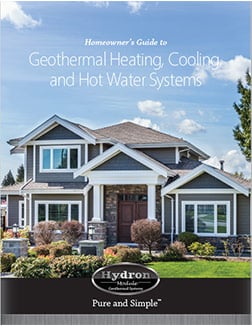Frigid winds, plummeting temperatures, ice and snow, blowing debris—your exterior HVAC unit takes a beating for sure. Throw in cottonwood tufts, leaves, pests seeking shelter, and curious kids who can’t resist poking sticks through openings, and it’s a wonder the unit doesn’t just give up entirely.
Well, sometimes it does.
And even our best intentions, like tucking it behind plants and shrubs, shortens its life. (Turns out that act of kindness reduces ventilation and clogs the system.)
The reality? Weather adversely affects anything left outside, including HVAC units like heat pumps and air compressors. One of the main culprits—extreme temperatures—compounds the stress. Here are some tips to help you prolong your unit’s life.
- Regular maintenance - Clean coils, change filters, and check for loose or damaged components. A well-maintained unit is better equipped to handle extreme cold.
- Insulate the unit - A specialized HVAC cover or blanket designed for this purpose can help retain heat and prevent extreme cold from affecting the internal components. With any cover, make sure that it doesn’t block vents or airflow.
- Use a hard cover - In regions with extremely cold winters, a cover made of durable materials like plastic or metal can provide an extra layer of protection against snow and ice.
- Elevate the unit - Install the unit on a platform or stand slightly above ground level. This prevents snow and ice from accumulating around the unit and reduces the risk of blockages and damage.
- Install a winter shroud - Some HVAC units come with optional winter shrouds that protect against cold temperatures and ice buildup. They improve airflow and protect sensitive components.
- Create a windbreak - Wooden panels or fencing around the unit can reduce the impact of cold winds.
- Keep the area clear - Regularly clear snow, ice, and debris from around the unit. Ensure there is a clear path for airflow and that the unit's vents are unobstructed. Some homeowners build a simple roof over the unit to protect it from snow. If you do this, be sure to allow 18’-24” of space all around.
- Seal gaps and openings - Seal any gaps or openings in the unit's housing to prevent cold air from entering and affecting internal components. Use weather-stripping or caulk as needed.
- Redirect gutters – Melting/dripping snow from overhead gutters can find its way to coils and freeze. Check the gutter near your pump and redirect as needed.
- Schedule professional maintenance - Before the onset of winter, schedule a professional HVAC inspection and maintenance service. Service professionals will check for any issues, ensure the unit is in good working condition, and recommend steps you can take for additional winter protection.
AVOID WEATHER ISSUES ENTIRELY WITH GEOTHERMAL HEATING AND COOLING
Geothermal heating and cooling systems are known for their longevity. Ground source heat pumps discretely tucked away inside the home are never exposed to the elements. Homeowners enjoy longer-lasting equipment, less maintenance, and reclaimed space outdoors for entertaining and recreation.
Contact Enertech today to learn more about the benefits associated with geothermal heating and cooling.


